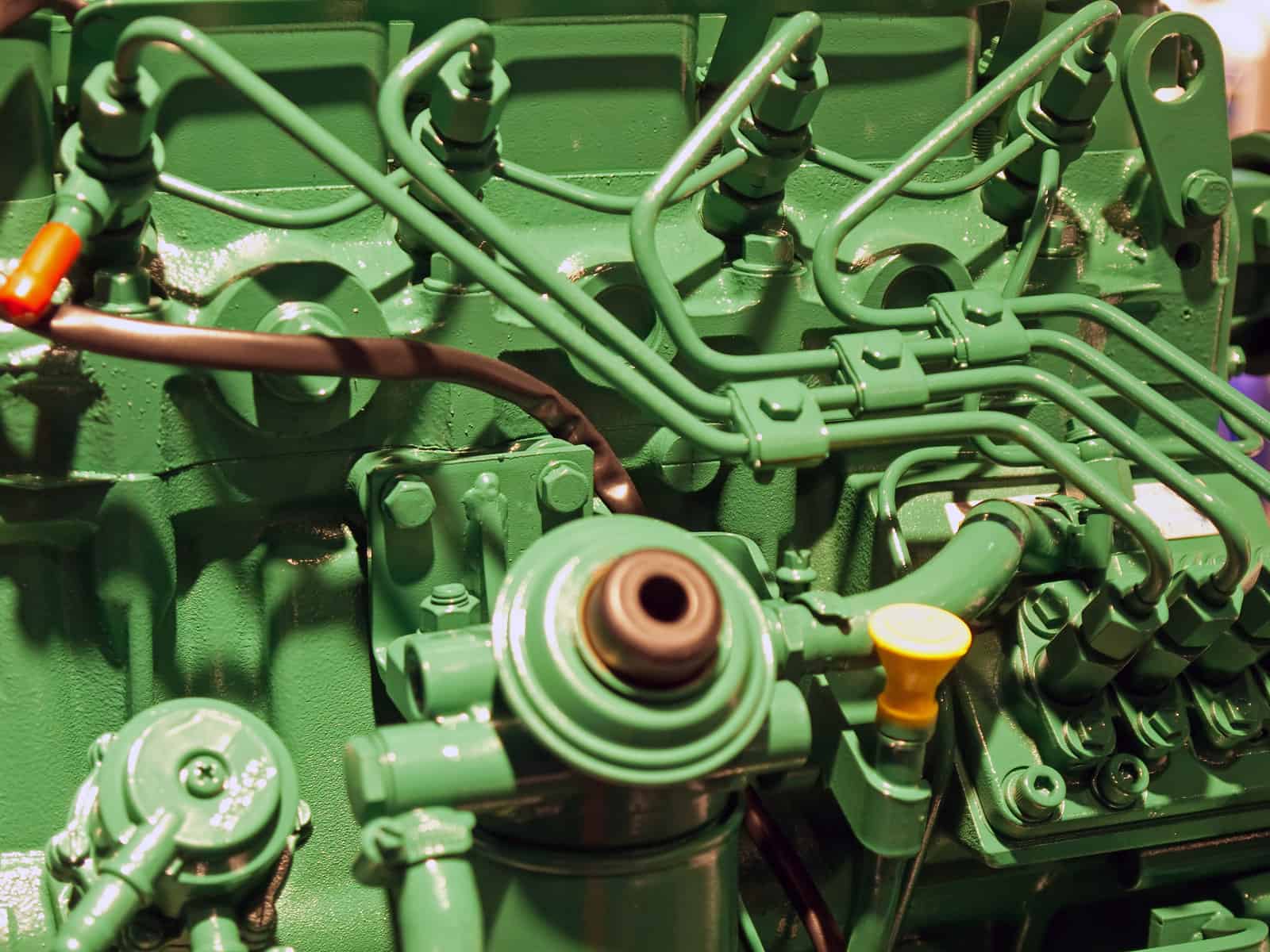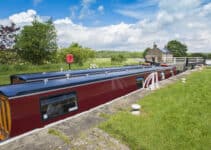Welcome Back fellow narrowboat enthusiasts! Today we are looking into the beating heart of a narrowboat, the engine! This is a vital part of any boat that can easily get overlooked. If you buy a boat with a ‘duff’ engine you could be in for a lot of extra cost and heartache. Also, there are a lot of newcomers to narrowboating that have literally no idea about engine maintenance. What should they do? Hopefully, we can provide at least a few of those answers 🙂
Different Types of Narrowboat Engines
Marine Diesel
We will start with the obvious choice, the traditional diesel engine. After horse and steam power fell by the wayside, the powerful diesel engine took their place! OK, maybe these days we wouldn’t think of these engines as powerful, and narrowboat engines haven’t changed much over the years. The benefit to this is that most narrowboat engines are simple and easy to work on for most people. Also, their ignition systems work well in the damp environment of a boat. This is why a lot of narrowboaters are sticking with these simple diesel engines even in new builds.
Outboard
Believe it or not, there is a school of thought that a small narrowboat could have an outboard motor on it. This would be a much more energy efficient engine than a traditional diesel engine typically found in a narrowboat. The problem I see is that it runs on petrol, and I am not sure how easy it would be to keep a petrol engine fuelled on the canals. Especially as the BSS is pretty strict when it comes to storing petrol on a boat. The big advantage is that, in a small boat, an outboard won’t take up your valuable living space. This is a pretty niche idea right now, but who knows it might catch on in the future.
The Little Boat Co. seems to be pushing the idea quite hard for their smaller narrowboats. I have to admit it looks a bit strange to me, but I can see how it could cut costs in terms of maintenance and efficiency. If this does interest you, go check them out by clicking the image below.
Electric
At the time of writing, electric cars are just starting to become more commonplace and within the normal person’s grasp (thanks to some government grants too). There are companies pushing this concept into narrowboat designs, but at the moment it is still quite expensive and outside what most normal narrowboat buyers would consider. However, as the technology becomes more common, I am sure that the cost begins to come down. When this happens, I am sure that electric narrowboats will become much more commonplace. Can you imagine how cheap it would be to run an electric narrowboat with solar panels covering the roof? The idea is great, but at the moment the cost is too high for most builds. And most traditionalists wouldn’t want their whole roof covered in solar panels, even if you buy ones that can be walked over. I am sure that over time solar technology will improve to the point where solar panels will be much smaller. It’s time will come!
If you are interested, Mothership Marine is a company pioneering electric narowboats.
Simple Narrowboat Engine Checklist
Below are some of our recommendations for different narrowboat engines. These are our preferences and, of course, everyone has their own experience and opinions. Maybe I have had rotten luck with a BMC engine, whilst others swear by them. The best way to go about narrowboat engine choice, is to follow this simple checklist.
- Buy an engine in current production.
- Buy an engine that has been professionally converted for marine use.
- Buy an engine that has cheap and readily available spare parts.
- Buy an engine that is in widespread use in the narrowboat community.
- Buy an engine that is simple to maintain and repair.
If you follow these simple rules, you will get an engine that will serve you well 🙂
Recommended Narrowboat Engines
If you have a lot of excess money floating around an electric narrowboat would be a great idea. If you are buying a particularly short narrowboat, an outboard motor might be a good option. However, for the vast majority of people, the traditional diesel engine will still be the best choice. But which diesel engines are best? Are there some you should avoid?
Well, to be honest, different engines have different quirks that would suit different situations. I will attempt to lay the quirks of each here for you to make your own decision.

Vintage (or simply aged) Diesel Engines
People still use older and more traditional diesel engines in their narrowboats, either because they are cheap or they like the nostalgia. You can even find people that will sell you one of these as a reconditioned engine for quite a bit less than a new one (just make sure they know what they are doing and used quality parts in the rebuild). Here’s our breakdown, but just remember, an engine is only as good as its maintenance record. Make sure whatever engine you choose has been well maintained.
BMC
BMC marine diesels were incredibly popular in the 60’s and 70s. They are cheap and simple diesel engines, the 1.5 and 1.8 litre versions being commonly used in narrowboats. I have heard more engine problems reported on BMC’s though, so make sure you buy a good one. These engines are incredibly common, so spare parts are easy to find and cheap. As they are water cooled, you have the option to heat water from your BMC too.
Lister
Another common older narrowboat engine, these have a reputation for simplicity and bulletproof reliability. Some people really like the ‘put-put-put’ sound of these engines too. Most are air cooled and will require your boat’s engine bay to have good venting to operate. The downside to these engines is they can be rather smokey and noisy. If reliability is your ultimate goal, you can’t go far wrong with a Lister though.
Modern Diesel Engines
When it comes to modern diesel engines, you can either pay more for an established brand or get something less well known for cheaper. These are our recommendations.
DIY Conversions of Car Engines
A lot of people have the bright idea to get a popular car engine converted to marine use and plonked into their narrowboat, mainly because the engines are known to be reliable and it will cost less. I would avoid these, especially if the owner did a DIY conversion. You want to stick to engines that are commonly found in narrowboats. Then, if you have a problem, there will be many more people around you that can offer assistance. Otherwise, everyone will say ‘never seen one of those before’ and anything you can’t deal with will have to fall on an expensive mechanic 🙂
New Engines that Cost Less
If you want to buy a modern engine on the cheap, you can find some Chinese made un-branded engines that would fit the bill. Personally, I wouldn’t bother with them. When talking about some of the Lister and BMC engines above, you will see examples that are still running well after 30 years. I am not sure we can expect as much from these unbranded and unknown engines. An engine is an investment! Like any other investment, you should buy quality. Also, parts for these engines are often hard to come by.
New and Respected Engines
The best choice here is a Betamarine engine, which is a marinised Kubota engine. These are tried and trusted engines that have been proven to excel when used in narrowboats. Reliable and cheap to run.
An engine often found in hire boats is the Isuzu marine engine, for very good reason. As with a lot of modern Japanese diesels, they are simple to maintain and reliable.
Vetus engines are great but tend to be a tad expensive on the spare parts front.
How to Maintain your Engine?
If you are using an old/vintage engine, the first thing you should do is search online to see if you can find a scanned copy of the original engine manual. You would be surprised how many there are! This will teach you the basics you need to know about the engine at no cost.
The next step is to learn the basic engine maintenance yourself. It is pretty simple.
-Check and maintain your fluid levels regularly.
-Investigate any leaks in the engine bay.
-Make sure any engine belts are in good condition and at a good tension level.
– Make sure any moving parts are well lubricated.
-Keep your engine clean.
-Make sure the bilge pumps are working as expected.
With the basics learned, if you are living on a narrowboat I would highly recommend you take that extra step to learn how to do engine work yourself. Engineers/ mechanics are expensive, and when you are stuck in the middle of nowhere the fastest way to get the engine running is if you can do it!
This book is a great place to start. Click the image to go view it over at Amazon.

It would even be a good idea to invest in a narrowboat engine maintenance course. They typically cost between £150-250, but will save you a lot of money in the long run!
That’s your lot!
Well, I hope you are not too confused after all that engine talk! There are a lot of different engine options in the narrowboat world, and everyone has their own opinion as to which option is best! I would keep it simple and say if you are on a budget get a professionally refurbished BMC unit, and if not go for a Betamarine unit. If you are worried about an engine in a boat you are buying, firstly make sure it is in good mechanical condition. Then use the checklist detailed above to decide whether the engine is a good one in general.Learn some engine maintenance yourself and away you go! Simple! I don’t know what all the fuss is about 🙂




![What Happened to Cruising The Cut [Narrowboat Youtuber]](https://canalboatuk.com/wp-content/uploads/2022/08/cruising-the-cut-youtube-channel-211x150.png)

Perfect timing, since I spent much of last week thinking about maintenance, servicing etc of our Beta Marine (first cruise since last year, so a bit of a shakedown). I realised there is a lot I don’t know yet. One of those is, if I got a boat yard to do a service what would they actually do? Perhaps an article on that would be well received
hi there Simon, thanks for your comment. If you are thinking of paying for a service, you can look HERE and HERE to get an idea as to what type of checks they would be doing. Happy cruising!
Useful engine guide with links to book and training. Looking forward to further articles.
Thanks for reading.